When it comes to trekking in the Himalayas, the Everest Base Camp trek stands out, especially for those who reach Kalapathar at sunset. Trekkers often find themselves captivated by the breathtaking vista, where the sky transforms into a canvas of fiery colors, casting a warm glow on the towering peaks of Everest and Lhotse. This moment isn’t just about the stunning views; it’s a profound experience that connects one to the majestic landscapes. However, planning such an adventure requires careful consideration of various factors, and understanding these can make all the difference in one’s journey.
Key Points
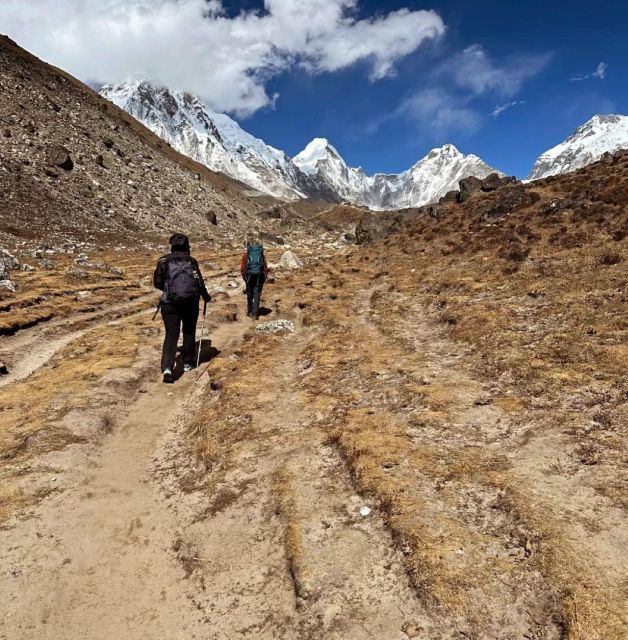
- The Everest Base Camp trek offers breathtaking views of iconic peaks, culminating in a memorable sunset experience at Kalapathar.
- Sunset at Kalapathar showcases vibrant hues, with Everest and Lhotse silhouetted against a stunning orange and pink sky.
- The trek includes essential acclimatization days, ensuring trekkers are well-prepared for the altitude and enjoy sunset views safely.
- Optimal trekking seasons, spring and autumn, provide clear skies and stable weather for the best sunset experiences at Kalapathar.
- Engaging with Sherpa culture along the trek enhances the overall journey, making the sunset at Kalapathar even more special.
Trek Overview and Highlights
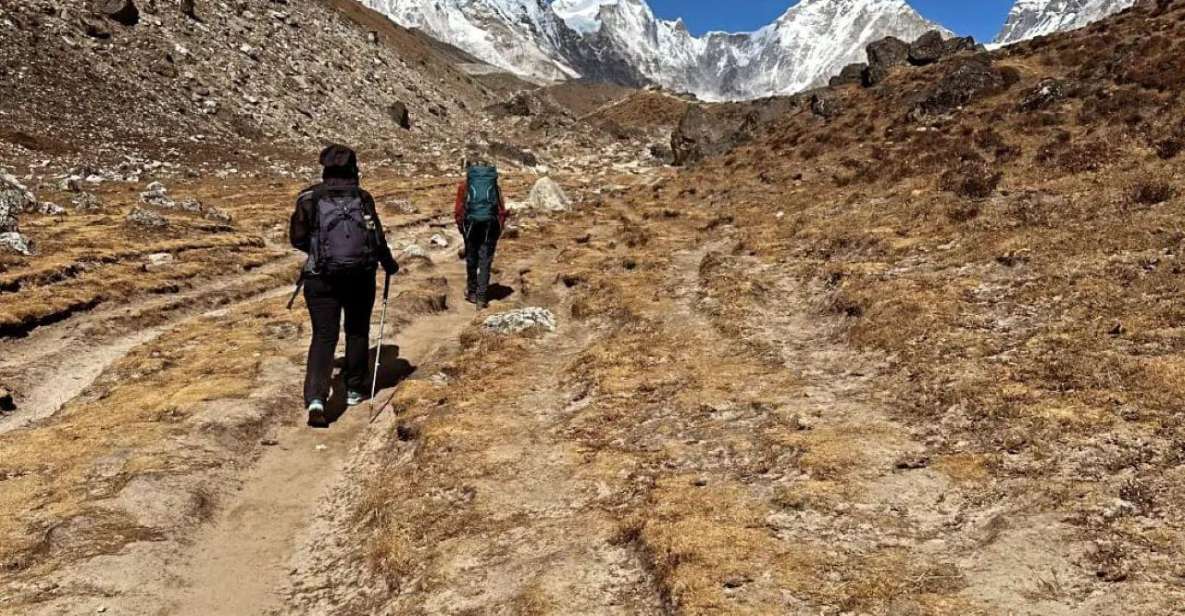
The Everest Base Camp trek offers adventurers a breathtaking journey through the heart of the Himalayas, culminating at the foot of the majestic Mount Everest.
Beginning in the lively town of Lukla, trekkers traverse picturesque Sherpa villages, ancient monasteries, and lush pine forests. Each step reveals stunning views of towering peaks like Lhotse and Nuptse, while the iconic Khumbu Icefall adds a touch of drama to the scenery.
Along the way, trekkers enjoy Sherpa culture, experiencing their warm hospitality and traditions.
This trek isn’t just about reaching a destination; it’s a transformative adventure that combines physical challenge with unparalleled beauty, making it a must-do for any trekking enthusiast.
You can also read our reviews of more tours and experiences in Lukla.
Best Time for Trekking
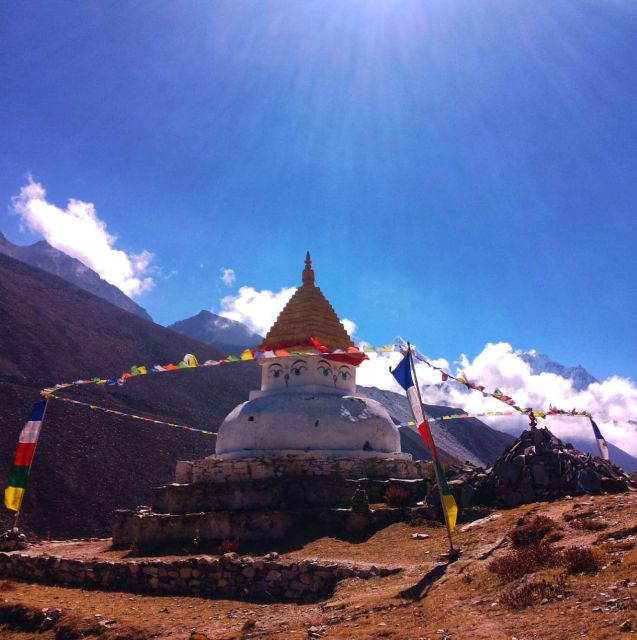
Spring and autumn stand out as the prime seasons for trekking to Everest Base Camp, offering stable weather and breathtaking views. During these times, trekkers can experience the stunning landscapes and vibrant surroundings without the extreme conditions that winter and monsoon bring.
Here’s what trekkers should consider:
-
Spring (March to May): Wildflowers bloom and temperatures rise, making trails accessible.
-
Autumn (September to November): Clear skies and crisp air ensure spectacular mountain vistas.
-
Weather Stability: Both seasons provide the most predictable weather, crucial for safety.
-
Crowd Management: Trekkers can enjoy the trails with fewer people compared to peak seasons.
Choosing the right time can make all the difference in the Everest Base Camp trek experience!
Sunset Experience at Kalapathar
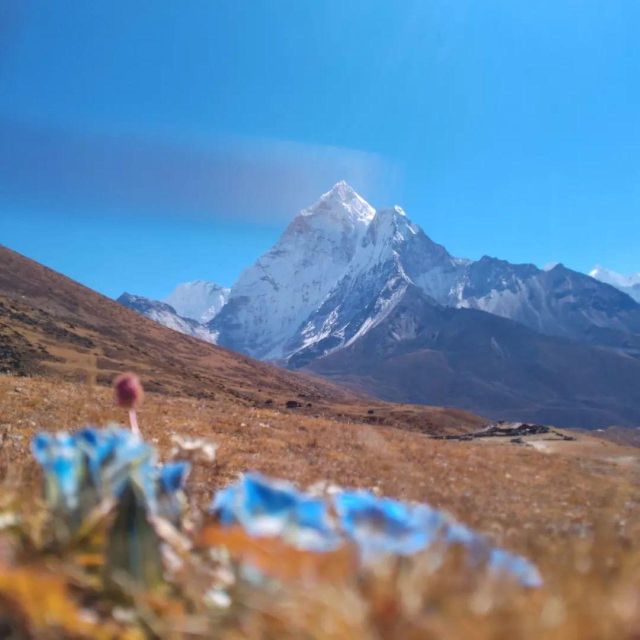
Witnessing the sunset at Kalapathar is often considered a highlight for trekkers, as the vibrant hues paint the towering peaks of the Himalayas in breathtaking shades of orange and pink. As the sun dips below the horizon, the scene transforms into a mesmerizing masterpiece, captivating every onlooker.
| Element | Description |
|---|---|
| Colors | Striking oranges and soft pinks |
| Atmosphere | Tranquil and awe-inspiring |
| Peaks | Majestic Everest and Lhotse |
| Experience | A perfect moment of reflection |
This magical moment not only offers stunning visuals but also fosters a sense of accomplishment and connection to nature, making the trek all the more memorable.
Trek Itinerary and Route
After soaking in the breathtaking sunset at Kalapathar, trekkers embark on an unforgettable journey through a meticulously planned itinerary that showcases the stunning landscapes and rich culture of the Everest region. Each day offers new experiences, allowing trekkers to connect with nature and the local community.
Here’s a quick overview of the trek itinerary:
-
Day 1: Fly from Kathmandu to Lukla, then trek to Phakding.
-
Day 2: Hike to Namche Bazaar, the Sherpa capital.
-
Day 3: Acclimatization day in Namche, exploring nearby villages.
-
Days 4-12: Ascend through Tengboche, Dingboche, Lobuche, and finally reach Everest Base Camp.
This route immerses trekkers in both adventure and culture, ensuring memories to last a lifetime.
More Great Tours NearbyEssential Packing List

What should trekkers pack for the Everest Base Camp trek to ensure they’re fully prepared for the challenges and experiences ahead? A solid packing list is crucial.
First, they’ll need sturdy trekking boots for uneven terrain.
Layered clothing is essential, including moisture-wicking base layers, insulating mid-layers, and a waterproof outer layer. Don’t forget a warm hat, gloves, and a buff for colder days.
Trekking poles can provide stability, while a good-quality sleeping bag will keep them warm at night.
Hydration is key, so a reusable water bottle or hydration pack is a must.
Lastly, trekkers should pack personal items like sunscreen, a first-aid kit, and snacks for energy boosts along the way.
Being well-prepared makes all the difference!
You can also read our reviews of more hiking tours in Lukla
Accommodations During the Trek
Trekking to Everest Base Camp offers not only breathtaking views and cultural experiences but also a variety of accommodations that enhance the journey. Trekkers can enjoy comfortable stays in traditional tea houses, which provide a cozy atmosphere and a chance to connect with fellow adventurers.
Here are four key features of accommodations during the trek:
-
Tea Houses: Basic yet comfortable lodges where trekkers can rest.
-
Shared Rooms: Typically dorm-style, fostering camaraderie among trekkers.
-
Warm Meals: Most tea houses serve local dishes, ensuring a satisfying end to a long day.
-
Stunning Views: Many accommodations offer breathtaking vistas of the surrounding mountains, making each stay memorable.
With these options, trekkers can focus on enjoying their adventure while feeling at home in the Himalayas.
Cultural Insights and Interactions
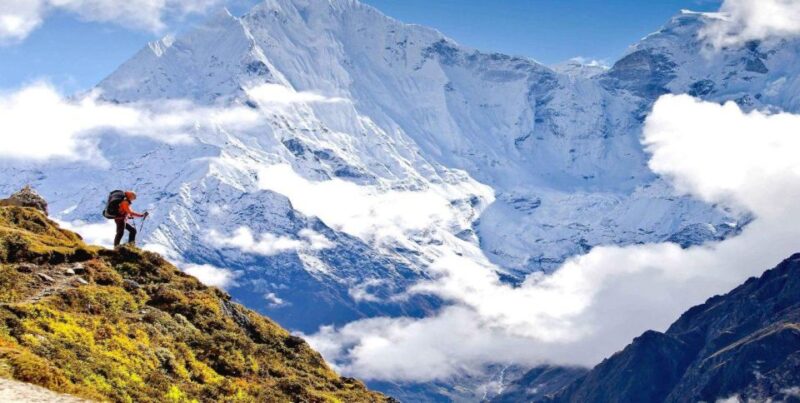
The Everest Base Camp trek offers trekkers a unique opportunity to enjoy the rich Sherpa culture and traditions that define this remarkable region of Nepal.
As they traverse the trail, trekkers encounter vibrant Sherpa villages, where warm hospitality and community spirit abound. Interactions with local families reveal their customs, such as traditional music and dance, which showcase their heritage.
Visitors can participate in time-honored practices, like sharing a meal of dal bhat, a staple dish. Trekking through ancient monasteries, trekkers gain insights into the spiritual lives of the Sherpas, who hold deep reverence for the mountains.
This cultural exchange enriches the trekking experience, turning each step into a journey through both breathtaking landscapes and the heart of Sherpa life.
Safety Tips and Considerations
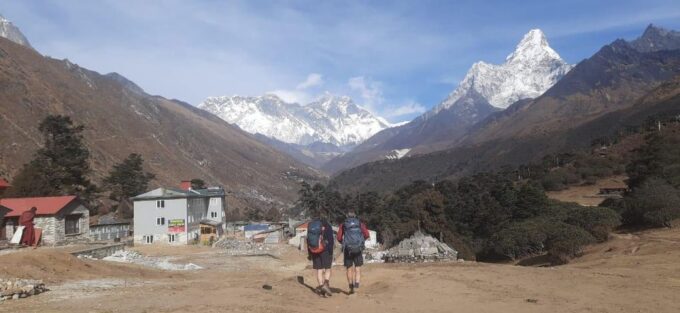
When embarking on the Everest Base Camp trek, it’s crucial to prioritize safety by acclimatizing properly and staying hydrated throughout the journey. Trekking in high altitudes can be challenging, so following these safety tips can make a difference:
-
Acclimatize Gradually: Take time to adjust to altitude; don’t rush your ascent.
-
Stay Hydrated: Drink plenty of water to prevent altitude sickness and fatigue.
-
Listen to Your Body: If you feel unwell, don’t hesitate to descend to a lower altitude.
-
Travel with a Guide: Experienced guides know the terrain and can assist in emergencies.
Frequently Asked Questions

What Is the Fitness Level Required for the Trek?
For the trek, a moderate fitness level’s required. Participants should engage in regular cardio and strength training. They’ll benefit from hiking experience, as altitude and terrain can be challenging despite supportive guides and porters.
Are There Any Age Restrictions for Participants?
There aren’t strict age restrictions for participants, but most trekking companies recommend being at least 12 years old. It’s essential for trekkers to be physically fit and prepared for the challenges ahead.
How Can I Prepare for Altitude Sickness?
To prepare for altitude sickness, he/she should acclimatize slowly, stay hydrated, and consider medication like Diamox. Regular rest days and a nutritious diet can also help the body adjust to higher elevations effectively.
Is There Wi-Fi Available During the Trek?
During the trek, Wi-Fi’s limited and often available only in lodges. It’s spotty and can be slow, so trekkers should plan for offline activities and enjoy the stunning surroundings without constant connectivity.
What Is the Policy on Solo Trekkers?
The policy on solo trekkers allows them to join group treks for safety and companionship. However, solo trekkers should consider hiring a guide for navigation and cultural insights, enhancing their overall experience in the Himalayas.
Recap
To sum it up, the Everest Base Camp trek offers an unforgettable adventure that combines breathtaking landscapes with rich cultural experiences.
Catching that stunning sunset from Kalapathar isn’t just a highlight; it’s a moment of pure magic that every trekker should cherish.
With the right planning, essential gear, and a spirit of adventure, anyone can embark on this incredible journey.
So, lace up those boots and get ready to create memories that’ll last a lifetime in the heart of the Himalayas!
You can check availability for your dates here:More Hiking & Trekking Tours in Lukla
More Tour Reviews in Lukla
Not for you? Here's more nearby things to do in Lukla we have reviewed
- Everest Heli Sightseeing Tour
- Mera peak trek
- Everest Base Camp Helicopter Landing Tour from TIA – 1 Day
- Everest Base Camp Trek – 6N/7D
- Nepal: Mera Peak Expedition with Trekking and Climbing
- Everest Scenic Mountain Flight (Review Exclusion Section)
- 16-Day Mera Peak Climbing Expedition
- 9 Best Tours In Lukla
- 24 Best Treks And Hiking Tours In Lukla
- 11 Best Helicopter Flights And Tours In Lukla
- Everest Base Camp Trek
- Kathmandu to Ramechhap Manthali Transfer – Sharing Vehicle
